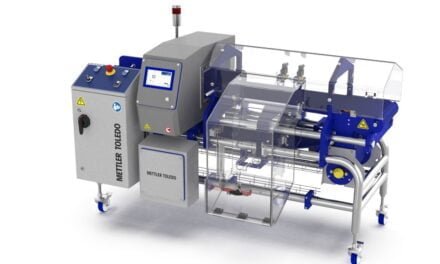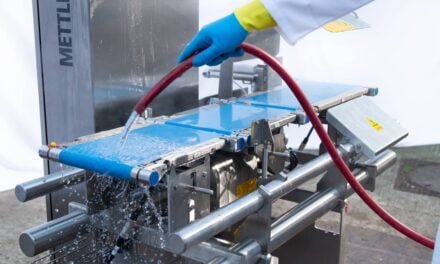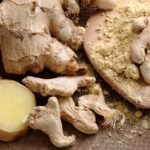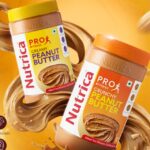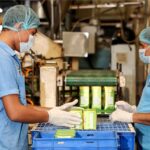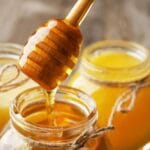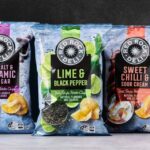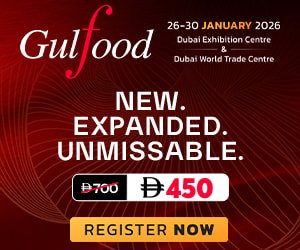While cooking the meat there may be an apparent conflict between the need to process for safety and the production of desired organoleptic properties. However, safety must take precedence over all other considerations, conclude A.R. Sen, B.M. Naveena, M. Muthukumar and Girish Patil, S
Table of Contents
The cooking of meat produces a product of favourable texture and taste. Taste is an important sensory property of muscle foods along with many other characteristics including colour, texture and odour. Variation in the colour of precooked meat products has however been a problem in the meat industry. Heat treatment must be sufficient to kill the vegetative pathogens, in addition to meeting technological objectives. In some cases, there may be an apparent conflict between the need to process for safety and the production of desired organoleptic properties. Under such circumstances, paramount importance should be given to safety and it must take precedence over all other considerations.
Meat Cooking
Several methods are being used for cooking of meat. The heating methods currently used by the meat industry are indirect in that they rely on conductive, convective and/or radiative phenomena of heat transfer from the heating medium to the meat. It may take considerable time to conduct sufficient heat into the product core to reach a safe endpoint temperature. This may cause some parts of the product to be overcooked and adversely affect quality and stability. In the dry heat method, meat is surrounded by dry air in the oven or under the broiler. It is adaptable to the preparation of the more tender cuts of meat. Pan-frying is suitable for small or thin cuts of meat, ground meat, thin strips or otherwise tenderized cuts that do not require prolonged heating. Roasting is adapted to the preparation of the larger, more tender cuts such as pork loin, shoulder, leg and sirloin of lamb. In the moist heat methods, meat is surrounded by hot liquid or steam. This method is suitable for the preparation of the less tender cuts of meat. Cooking in liquid can be used for preparing both small and large pieces of meat.
With impingement cooking, jet-like high-pressure stream of hot water or air are applied to the meat through nozzles that are fixed perpendicular to the meat surface. In an electronic (microwave) oven, a magnetron produces microwaves that are absorbed by the food, causing the molecules within the food to vibrate against each other. The primary advantage of microwave cooking is speed; the cooking time is usually cut to about half. Recently, ohmic processing, sometimes described as resistive heating, consists of passing current directly through a conductive food, which in turn generates heat is being used (Wills et al., 2006). Here, the heat distribution throughout the product is far more rapid and even, which can result in better flavour retention.
Myoglobin and Meat Cooking
Myoglobin, an oxygen-binding protein found in muscle, is the pigment most responsible for colour of meat, though haemoglobin may also be present in small quantities. Myoglobin exists in three main forms, de-oxymyoglobin, myoglobin and metmyoglobin. Oxymyoglobin is the pigment that produces the favoured bright red colour of raw meat and is formed rapidly in the presence of oxygen at normal atmospheric pressure (Varnam and Sutherland, 1995). The three forms of myoglobin differ in their sensitivity to heat. De-oxymyoglobin is the least sensitive to heat denaturation, followed by myoglobin, then metmyoglobin, though the latter two have fairly similar heat sensitivities (Hunt et al., 1999).
As the globin is denatured, metmyoglobin forms the brown globin hemichromogen, also known as ferrihaemochrome. The other myoglobins are denatured to the red globin haemochromogen, also known as ferrohaemochrome. The latter is readily oxidized to the former, so ferrihaemochrome is present in larger amounts in cooked meats.
Colour of Cooked Meat and Cured Products
In non-nitrite containing meat that have been adequately cooked, the red colour of raw meat changes to off-white, grey and brown hues; depending on the nature of the muscle. In general, the colour of cooked meat will be determined by the extent of globin hemichromogen formation and the quantity of undenatured myoglobin present. Brown pigmentation in cooked meats, unlike that in fresh meat, is normally a desirable attribute of meat quality. The temperature of cooking naturally affects the degree of conversion of pigments. Beef cooked to an internal temperature of 600 C has a bright red interior. And that cooked to an internal temperature of 60-700 C has a pink interior and that cooked to an internal temperature of 70-800 C or higher in grayish brown. These factors contribute the brown colour of cooked meat including the caramalization of carbohydrates and Maillard type reactions between reducing sugars and amino groups.
Many meat products are formulated by using ingredients that contain some form of nitrite. Nitrite allows cured colour to be fixed while improving flavour and product safety. Nitrite itself does not directly cause the development of cured meat colour. Rather reduction of nitrite to nitric oxide and its subsequent binding with myoglobin causes the pink cured colour to develop and the colour requires heating to become fixed. This cured colour is heat stable and does not disappear with further cooking. Pink cured colour is desirable and expected by consumers when purchasing cured product. Conversely, fresh ground products are expected to be devoid of any red or pink colour when cooked because consumers have learned to cook product until no red remains.
Cooking and Flavour of Freshly Cooked Meat
The flavour of freshly cooked meat is believed to result from a number of volatile compounds. The importance of an individual compound depends both on its concentration and on its odour threshold. The thermal oxidation reactions during cooking, despite following similar pathways to autooxidation, contribute desirable flavour. In recent years it has been possible to identify a number of the key compounds responsible for the characteristic flavour of meat. It is fairly well accepted that cooking of meat and meat products increases the rate and extent of oxidation. Flavour of stored cooked meat is modified by the rapid development of ‘Warmed Over Flavour’ (WOF). It was first used to describe the rapid development of oxidized off-flavours in refrigerated cooked meats. This is generally considered to be due to the oxidation of phospholipids located in the cell membranes. Lipid hydroperoxides, the initial products of lipid oxidation, are unstable and undergo further degradation through free radical mechanisms to form aliphatic aldehydes, alcohols, ketones etc. These secondary products are the major contributors to off flavours in meats. Cooking methods and final internal temperature affect the formation and stability of the volatile compounds in meats.
Factors Affecting Colour of Cooked Meat
The amount of ferrihaemochrome formation from myoglobin during cooking is affected by initial meat pH. The most two important conditions for pH affecting meat colour are PSE (pale soft exudative) and DFD (dark firm dry) (Warriss, 2000). PSE mainly affects pigs, though PSE-like characteristics have been observed in poultry meats and occasionally in beef. The PSE and DFD conditions have been shown to influence the cooked colour of pork. When compared to beef of normal pH, the proportion of myoglobin denatured during cooking in high pH beef is less and a more intense red colour is measurable. The effect of pH on the colour of cooked meat has also been observed in meats other than pork or ground beef. Raw chicken breast of higher pH is associated with a darker appearance and this relationship somewhat persists with cooking. The extent to which pH affects the cooked colour of meat appears to vary between meats from different animal species.
The species of animal, the age of the animal at slaughter and the anatomical location of the muscle from which meat is sourced can all affect final cooked meat colour. To an extent, this is explained by difference in myoglobin content. The extent of myoglobin oxygenation or oxidation of the iron moiety (redox potential) plays an influential role in rate of browning and the final cooked colour of meat. In most of the raw meat products, the myoglobin form will be largely influenced by the atmospheric conditions created by packaging and display conditions. The oxidation state of the iron moiety will affect cooked meat colour. The oxidation and oxygenation state of myoglobin is dynamic in meats and will be influenced by storage and packaging. Meat that contains higher concentration of oxymyoglobin or metmyoglobin will become brown quicker with cooking than those with higher proportion of deoxymyoglobin (Lien et al, 2002).
The freezing history and the length of time under frozen storage or thawing both affect the cooked colour of meat. Products cooked after thawing had a better-done appearance than those cooked from frozen. The fat content of meat may have some effect on the final cooked colour, with higher fat patties appearing less pink. The oxidation state of lipids and pigments are closely linked, so that an increase in one similarly increases the other. While fat content might influence the cooked colour of meat, it is probably not as influential as other factors that alter cooked colour, particularly high pH and freezing history.
In fresh meat and meat products, a number of ingredients may be added to meat prior to cooking. Some of these ingredients have been shown to affect the cooked colour of meat. The addition of sodium chloride or sodium tripolyphosphate can increase myoglobin denaturation. The presence of salt will cause faster browning of meat and may cause meat to be visually assessed as cooked before microbiologically safe cooking has offered. Pressure treatment is sometimes used to improve microbiological quality and colour of meat and may impact on cooked colour. The persistent pink colour of cooked, irradiated pork and poultry and in many cases beef irradiated and vacuum, will more likely be interpreted as undercooking, and the product will be rejected or overcooked with subsequent lossess in quality.
Safe Meat Cooking
Quality assurance is primarily concerned with ensuring that meat is correctly cooked, cooled and protected from contamination. Application of HACCP (Hazard analysis and critical control point) is considered invaluable in cooked meat production. Cooking should be monitored; cooking time and temperature of the heating medium and the product should be recorded. Cooked meat as a whole, when correctly processed and stored is a highly stable product. Despite this, microbiological problems continue to occur and outbreaks of food poisoning naturally receive more attention. In a general sense, cooked meat products containing insignificant levels of added inhibitors support rapid growth of microorganism. Food poisoning resulting from undercooking is a continuous problem. Poor temperature control is often a contributory factor in cooked chicken product. Under-cooking of commercially processed chicken is a cause of listeriosis.
Consumers often use internal cooked colour to judge doneness of ground product. Persistent pinking and premature browning are two different conditions that prevent cooked colour being a reliable indicator of meat doneness and safety to consumers. Persistent pinking occurs when a pinkish internal colour remains after temperature-ensuring safety from a microbial standpoint has been attained. Persistent pinking is troublesome in food service, where consumer acceptance is often driven by appearance; a pink internal colour is unacceptable to most of the consumers. Premature browning occurs when meat appears well done with no pink remaining, even though temperature that ensures microbial safety has not been attained. As a precaution against poisoning from meat infected with pathogens such as E.coli O157:H7, it is mandatory that minced meat products should be heated at least 2 minutes at 700 C until no red colour remained, it being the assumption that the organism would be destroyed before myoglobin was denatured and converted to myohaemochromogen. Poultry shall be held for 15 seconds at 740 C. These specifications are sufficient to inactivate most microorganisms and produce a safe cooked meat product, provided pre and post cook conditions are also controlled.
Conclusion
In India, the process of meat cookery and production of cooked meat is entirely different compared to Western and developed countries. In household preparation, hot meat is pressure-cooked only with well done and adequately safe. The proportion of precooked meat products is very meager in our day-to-day diet. Fortunately for major food producers and food service companies, HACCP programme has already been established practice where cooking is monitored through time/temperature methods. However in minor food service companies such as fast food outlets and independent restaurants often visual inspection is the main tool to judge if meat is cooked adequately. Campaign has to be organized for consumers’ awareness in the safe cooking temperature of meat and meat products. Government food regulation agencies will need to enforce laws for safe cooking and convey the constant message targeting the safe cooking of meat. In an emergency situation like in recent bird flu scare, this will help the consumers for safe cooking and a great loss to the poultry industry can be reduced.
References
- Hunt, M.C., Sorheim, O. and Slinde, E. 1999. Colour and heat denaturation of myoglobin forms in ground beef. Journal of Food Science. 64: 847-851.
- Lien, R., Hunt, M, Anderson, S., Kropf, D., Loughin, T., Dikeman, M. and Velazco, J. 2002. Effects of end point temperature on the internal colour of pork chops of different quality. Journal of Food Science. 67:1007-1010.
- Varnam, A. and Sutherland, J. 1995. Meat and meat products. London: Chapman and hall, pp430.
- Warriss, P. 2000. Meat Science: An introductory Text. Oxon: CABI Publishing, pp310.
- Wills, T.M., Christina, A., Mireles, D., Sigfusson, H and Bellmer, D. 2006. Effect of cooking method and ethanolic tocopherol on oxidative stability and quality of beef patties during refrigerated storage (oxidative stability of cooked patties). Journal of Food Science. C109-114.
Phto by freepik



